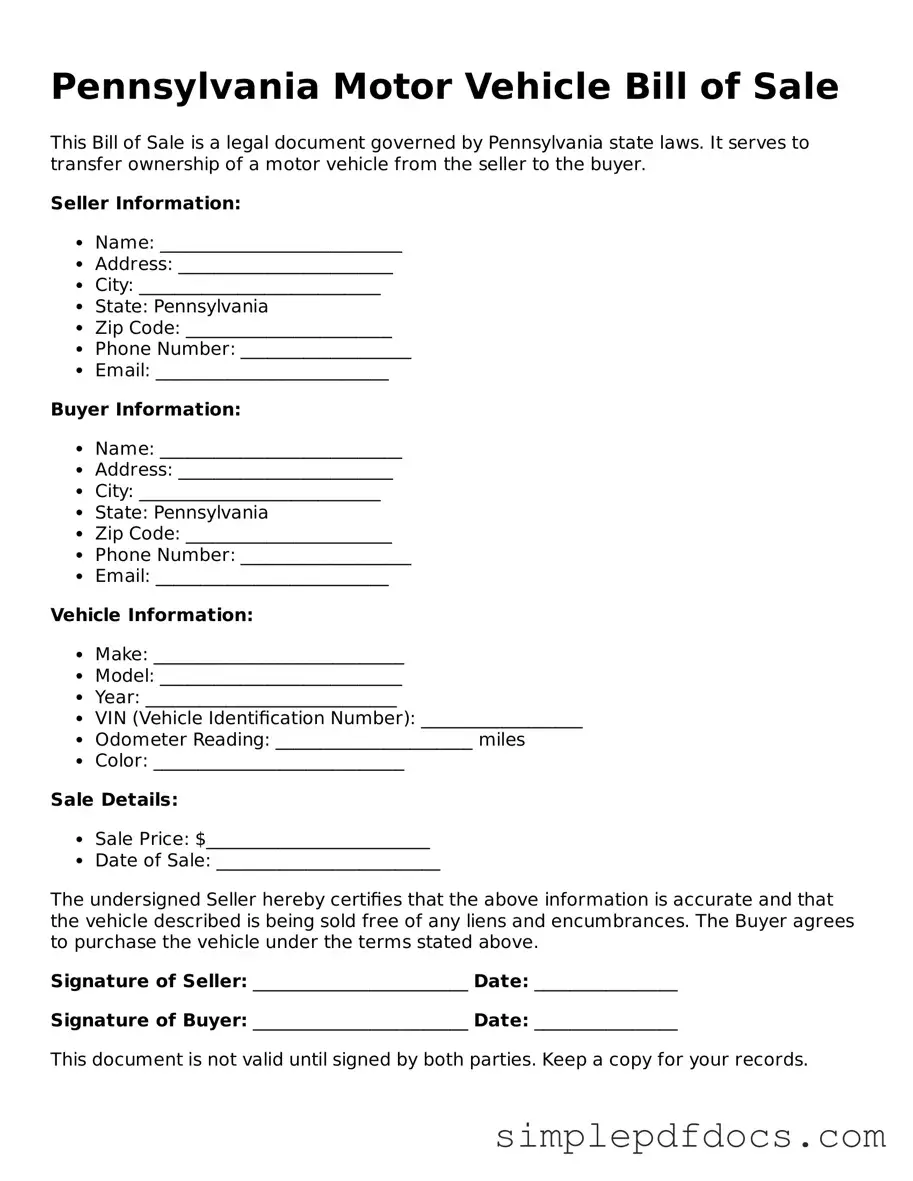Legal Motor Vehicle Bill of Sale Document for the State of Pennsylvania
The Pennsylvania Motor Vehicle Bill of Sale form is a legal document used to record the transfer of ownership of a vehicle from one party to another. This form serves as proof of the transaction and includes essential details such as the vehicle's identification number, sale price, and the names of both the buyer and seller. Understanding this form is crucial for ensuring a smooth transfer and compliance with state regulations.
Get Document Here
